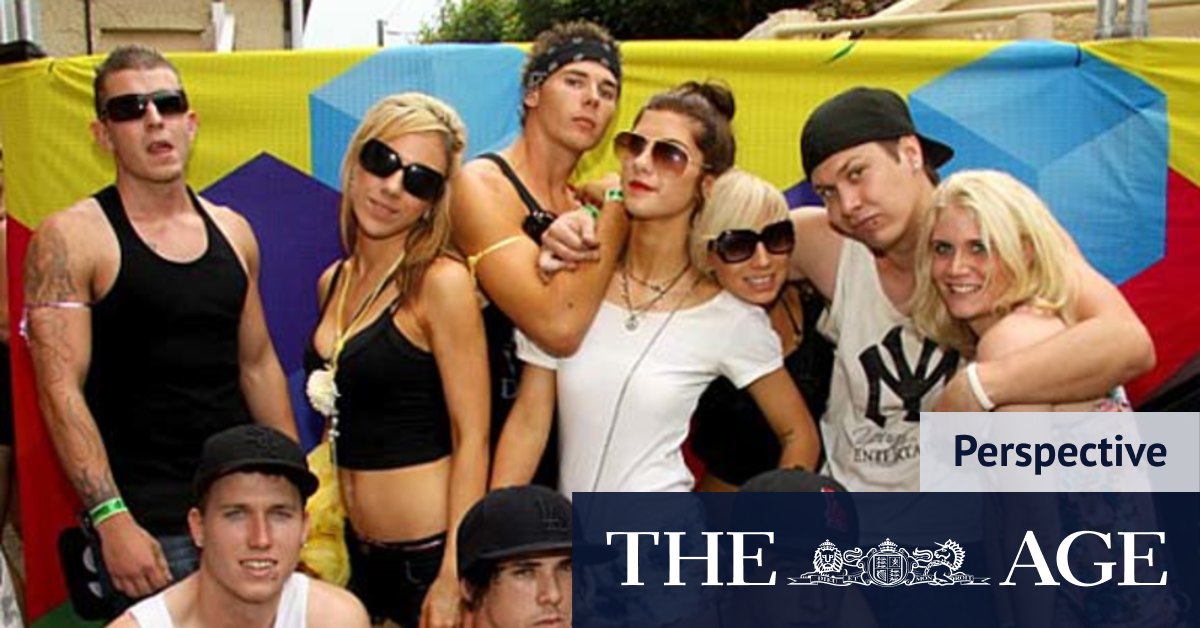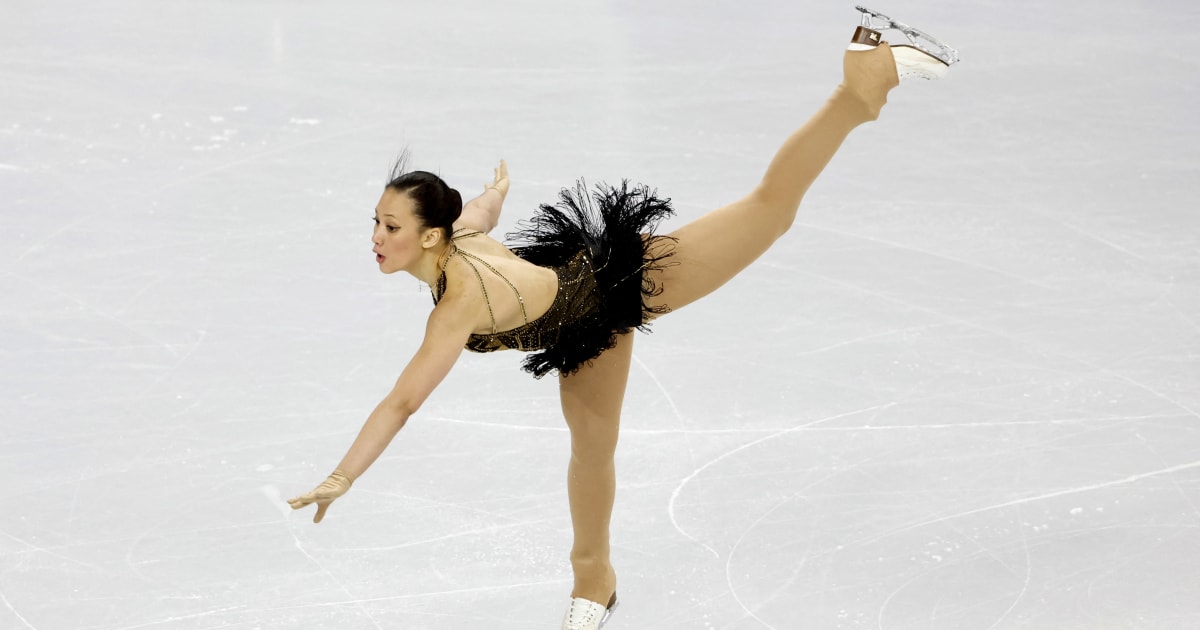Introduction
Chronic subdural hematoma (CSDH) is a common condition where there is a collection of blood between the dura mater and the arachnoid membrane.1,2 Unlike acute subdural hematomas, which occur shortly after a traumatic brain injury, CSDHs have a slow onset and are often detected after manifestation of neurological symptoms, such as dizziness and tinnitus, memory loss, headache, nausea, and vomiting. The persistent hematoma compresses the brain tissue, leading to necrosis and neurological dysfunction. This can cause limitations in limb movement, cognitive impairment, speech confusion, and memory loss.3,4
Surgical treatments for CSDH include puncture drainage, craniotomy for hematoma removal, burr-hole drainage, and endoscopic-assisted drilling drainage. Compared to craniotomy, drilling and drainage methods are often preferred due to their less invasive nature.5,6 A burr hole drainage is the most frequently used surgery for CSDH. Organized chronic subdural hematoma (OCSDH) is a rare form of chronic CSDH. While typical CSDHs are effectively treated with burr hole trephination and hematoma drainage, OCSH usually requires craniotomy and membranectomy, as it is not responsive to burr hole drainage.7–9 CSDH predominantly occurs in middle-aged and elderly patients, who are also at risk of malnutrition from neurological conditions like stroke, traumatic brain injuries, and intracranial tumors. Good nutrition is essential for healing, reducing complications, and improving outcomes after surgery. The patient’s nutritional status plays an important role in their overall surgical response and prognosis after surgery for CSDH.10–12
The controlled nutritional status score (CONUT) is an indicator of malnutrition, which is calculated based on three key clinical indicators, 1) Serum albumin levels: Albumin is a protein produced by the liver, and low levels often indicate poor nutritional status, liver disease, or inflammation. It’s a key marker for assessing protein nutrition; 2) Total lymphocyte count (TLC): Lymphocytes are a type of white blood cell involved in the immune response. A low count can indicate malnutrition or weakened immunity affecting recovery and susceptibility to infection; 3) Total cholesterol levels: Cholesterol levels can provide insight into overall nutritional health. Low cholesterol levels are often associated with malnutrition or illness.13 CONUT is used as a prognostic marker in various medical conditions, including malignant tumors within specific elderly populations.14,15 The Prognostic Nutritional Index (PNI) is another widely used tool to assess nutritional status and predict outcomes in patients, particularly in relation to surgery, chronic diseases, and conditions where malnutrition can significantly affect prognosis. The PNI reflects nutritional and inflammatory status in patients undergoing gastrointestinal surgery; it is calculated based on serum albumin concentration and peripheral blood lymphocyte count. The PNI has demonstrated prognostic value in patients with stroke, head and neck tumors, and breast cancer.16–18 Both the CONUT and PNI eliminate the influence of subjective factors because they are based on objective measurements, providing an accurate reflection of the nutritional status of patients.
CSDH is frequently seen in elderly patients, who are often at risk for nutritional deficiencies. The potential nutritional risk may significantly influence the clinical outcomes of elderly patients with CSDH.19 While CONUT and PNI have been studied in various medical conditions to predict prognosis, nutritional status, and outcomes, their role in predicting the prognosis or recurrence of CSDH has not been thoroughly explored. Therefore, this study aims to evaluate the nutritional risk in CSDH patients using CONUT and PNI and to predict the prognosis of CSDH following surgical intervention.
Methods
Study Design and Patients
This retrospective study analyzes the clinical data from patients diagnosed with CSDH. These patients were admitted to the neurosurgery department of Affiliated Hospital of Chengde Medical University hospital between December 2017 and December 2022 and underwent surgical treatment. The inclusion criteria were as follows. 1) Patients aged 18 years or older; 2) Patients who had a clear diagnosis of CSDH by CT scan; 3) Patients who underwent burr-hole drainage as their initial surgical procedures; 4) Patients with complete clinical data; and 5) Patients who received necessary follow-up care after hospital discharge. The exclusion criteria were as follows: 1) Patients who had received transfusions of blood products, including whole blood, RBCs, plasma, and albumin before hospital admission; 2) Patients with concurrent infectious diseases; 3) Patients with chronic diseases, including cirrhosis of the liver, hyperlipidemia, and anemia; 4) Patients with a previous history of craniotomy; 5) Patients who had psychiatric and psychological disorders concurrently; and 6) Patients with incomplete clinical data or who failed to follow-up.
Patients identified as at risk of malnutrition received individualized nutritional guidance. Personalized nutrition treatment plans were developed by a registered dietitian, incorporating high-protein dietary recommendations and, when indicated, enteral nutrition support. Nutritional interventions were tailored based on the patient’s clinical condition, nutritional risk score, and tolerance to oral intake.
This study was conducted in accordance with the ethical principles of the Declaration of Helsinki and its later amendments. It was approved by the Ethics Committee of the Affiliated Hospital of Chengde Medical University. The requirement for informed consent was waived due to the retrospective nature of the data analysis. All patient data were anonymized and handled with strict confidentiality in compliance with institutional and data protection guidelines to ensure the privacy and rights of all individuals involved.
Data Collection
Data was collected regarding the patient’s age, sex, height, weight, smoking history, drinking history, and medical history, including any illnesses, such as hypertension and diabetes. Information on the use of lipid-lowering, anticoagulant, and antiplatelet medications was also gathered. Additionally, preoperative laboratory values were retrieved, including serum albumin (ALB), hemoglobin (HB), blood glucose levels, peripheral lymphocyte counts, neutrophil counts, total cholesterol, triglyceride levels, percentage of peripheral mononuclear cells, and fibrinogen levels. Details about the hematoma were also documented, including its location, volume, density, width, midline shift, subdural space, and the amount of intracranial fluid and pneumoperitoneum present before discharge. Intracranial fluid volume refers to the volume of intracranial fluid (eg, residual hematoma, cerebrospinal fluid, or other fluid collections) present in the brain after the surgical procedure to evacuate the CSDH before the hospital discharge.
Prognostic Score
Patients were assessed using the modified Rankin scale (mRS) at hospital discharge, and their prognosis was categorized based on their mRS scores. The classifications were as follows. 0: completely asymptomatic; 1: symptomatic but not functionally impaired; 2: mildly handicapped, able to care for themselves but with some limitations; 3: moderately handicapped, unable to fully care for themselves but able to walk independently; 4: severely handicapped and unable to walk independently; 5: bedridden; and 6: diseased.20 Based on the mRS at discharge, patients were divided into two groups: a poor prognosis group (mRS of ≥3) and a good prognosis group (mRS of <3).
CONUT Calculation
The CONUT was determined based on three parameters: preoperative ALB (g/L), peripheral blood lymphocyte count (×109 cells/L), and serum total cholesterol value (mg/dl), and the scoring criteria for each parameter were as follows. 1) Peripheral blood lymphocyte count (×109 cells/L) was divided into four levels, ≥1.60×109 cells/L, (1.20–1.59)×109 cells/L, (0.80–1.19)×109 cells/L, and <0.80×109 cells/L. ≥1.60×109 cells/L, (1.20–1.59)×109/L, (0.80–1.19)×109/L, and <0.80×109/L were scored 0, 1, 2, and 3 points, respectively. 2) Serum albumin levels were grouped into ≥35.0 g/L, 30.0–34.9 g/L, 25.0–29.9 g/L, and <25.0 g/L, and were scored as 0, 2, 4, and 6 respectively. 3) The serum total cholesterol levels were categorized into four groups, >4.68 mmol/L, 3.64–4. 68 mmol/L, 2.6–3. 63 mmol/L, and < 2.6 mmol/ L, with scores of 0, 1, 2, and 3, respectively. To calculate the CONUT, the points from the three parameters were added together. The resulting score was categorized as follows: 0–1: Normal; 2–4: Slightly Abnormal; 5–8: Moderately Abnormal; and 9 and above: Severely Abnormal.21 A CONUT of ≥2 indicated nutritional risk, while a score of <2 indicated no nutritional risk.
PNI Calculation
PNI was calculated, using the formula, PNI=ALB (g/L)+5×lymphocyte count (109/L), with reference to the criteria developed by Onodera et al, PNI of ≥45 was considered no nutritional risk, and PNI of <45 was considered a nutritional risk.22
Statistical Analysis
Statistical analysis was conducted using SPSS version 29.0. Data were expressed as mean ± standard deviation. A t-test was utilized to determine differences between the poor prognosis and good prognosis groups when the data was normally distributed. The Mann–Whitney U-test was applied to see the differences between the groups when the data was non-normally distributed. Count data represented as percentages (%) were analyzed using the chi-square (χ²) test. In cases where the data exhibited a hierarchical distribution, the rank-sum test was applied to assess differences between the groups. Receiver operating characteristic (ROC) curves were generated to evaluate the predictive value of CONUT and PNI on the postoperative prognosis of patients with chronic CSDH. Additionally, univariate and multivariate logistic regression analyses were performed to identify risk factors associated with CSDH. A p-value of <0.05 was considered statistically significant.
Results
Patient Characteristics
This study examined 205 patients who underwent surgery for CSDH (Table 1). Among these patients, 17 (8.3%) had a poor prognosis. The mean age of the group with a poor prognosis was significantly higher (72.82 ± 8.85 years, P<0.05) compared to the group with a good prognosis, whose mean age was 65.49 ± 12.82 years. In the poor prognosis group, there were 11 cases (64.7%) identified with nutritional risk (PNI<45), and 16 cases (94.1%) had a CONUT of ≥2. Conversely, in the good prognosis group, 36 cases (19.1%) had nutritional risk (PNI<45), and 62 cases (33%) had a CONUT of ≥2. The PNI and CONUT scores between the two groups showed significant differences (P < 0.05).
|
Table 1 Demographic and Clinical Characteristics of Patients
|
Laboratory Indicators
In comparison to the group with a good prognosis, the poor prognosis group showed decreased levels of albumin (ALB), hemoglobin (HB), and triglycerides, while fibrinogen levels were elevated (P<0.05). However, there were no statistically significant differences observed in blood glucose levels, neutrophil count, platelet count, or lymphocyte count (Table 2).
 |
Table 2 Laboratory Indicators
|
Imaging Characteristics
All patients underwent cranial CT scans to confirm a diagnosis of CSDH (Table 3). There was no statistically significant difference between the two groups regarding hemorrhage location, hematoma width, midline shift, pre-discharge subdural space, hematoma volume, and pre-discharge intracranial pneumatization. However, there was a statistically significant difference in hematoma density and pre-discharge intracranial fluid volume between the two groups (P<0.05).
 |
Table 3 Imaging Characteristics
|
To further illustrate the changes in hematoma before and after surgery, Figure 1 presents representative cranial CT images of patients with left-sided, right-sided, and bilateral CSDH. The images show the hematoma appearance in the preoperative, postoperative, and re-examination phases. In each row, the progressive reduction and eventual resolution of the subdural hematoma following burr-hole drainage can be observed. This figure demonstrates the typical radiological evolution of CSDH in different locations after surgical intervention.
 |
Figure 1 Representative cranial CT images showing radiological evolution of chronic subdural hematoma (CSDH) before and after surgical intervention. Each row presents images from a patient with left-sided, right-sided, or bilateral CSDH, respectively. Columns correspond to three time points: preoperative, postoperative, and re-examination phases. The images illustrate the typical reduction and resolution of subdural hematoma following burr-hole drainage across different hematoma locations. These serial CT scans highlight the radiological changes and treatment response at each stage of management.
|
Predictability of CONUT and PNI for the Prognosis of CSDH
The ROC curve analysis indicated that the area under the curve (AUC) for CONUT in predicting the prognosis of CSDH was 0.719 (95% CI: 0.5867–0.8523, P=0.002). The optimal cutoff value for CONUT was determined to be 3.5, which resulted in a sensitivity of 84.0%, a specificity of 47.1%, and a false-positive rate of 52.9%. For the PNI, the AUC was 0.803 (95% CI: 0.7031–0.9042, P<0.001). The optimal PNI value was found to be 44.69, with a sensitivity of 81.0%, a specificity of 64.5%, and a false-positive rate of 35.3%. When combining both CONUT and PNI, the AUC increased to 0.805 (95% CI: 0.7039–0.9059, P<0.001). This combination yielded a sensitivity of 92.5%, a specificity of 76.5%, and a false-positive rate of 23.5%. In summary, while CONUT demonstrated higher sensitivity and a greater false-positive rate compared to PNI, PNI exhibited better specificity. The combined use of CONUT and PNI yielded the most favorable results, with the highest sensitivity and specificity as well as the lowest false-positive rate (Figure 2 and Table 4).
 |
Table 4 Predictive Value of CONUT and PNI for the Prognosis of CSDH
|
 |
Figure 2 Receiver operating characteristic (ROC) curves for CONUT, PNI, and the combined CONUT+PNI in predicting poor prognosis of chronic subdural hematoma (CSDH). The ROC curves display the diagnostic performance of the Controlling Nutritional Status (CONUT) score (solid line), Prognostic Nutritional Index (PNI) (dashed line), and the combination of CONUT and PNI (dotted line). The curves plot sensitivity against 1-specificity for each index. The area under the curve (AUC) values for each predictor are shown, demonstrating the comparative prognostic accuracy of these nutritional indices for postoperative outcomes in CSDH patients.
|
Risk Factors Predicting Poor Prognosis of CSDH After Surgical Intervention
The univariate logistic regression was conducted to identify factors predicting poor prognosis in CSDH following burr-hole drainage. In this analysis, poor prognosis was treated as the dependent variable, while various factors from general clinical data, laboratory tests, and CT results were considered independent variables (Table 5). The findings revealed that age, albumin level (ALB), PNI, CONUT score, total cholesterol (TC), and the amount of intracranial fluid present before discharge were significant risk factors for poor prognosis in patients undergoing burr-hole drainage for CSDH (P<0.05). Multivariate analyses indicated that CONUT (OR=1.485, 95% CI: 1.096–2.011) and PNI (OR=0.850, 95% CI: 0.763–0.947) were independent risk factors for poor prognosis of CSDH following surgical intervention, after adjusting for age, hypertension, and pre-discharge intracranial fluid volume (Tables 6 and 7).
 |
Table 5 Univariate Binary Logistic Regression Analysis for a Poor Prognosis of CSDH
|
 |
Table 6 The Multivariate Logistic Regression Analysis with CONUT
|
 |
Table 7 The Multivariate Logistic Regression Analysis with PNI
|
Discussion
In the study, it was found that 64.7% of patients exhibited nutritional risk based on the PNI, while 94.1% of patients in the poor prognosis group had abnormal results when assessed by the CONUT. In contrast, among patients in the good prognosis group, only 19.1% showed nutritional risk based on PNI and 33% had abnormal CONUT.
The incidence of CSDH is rising among the elderly population, largely due to their frequent use of anticoagulants and antiplatelet medications.23,24 Factors such as abnormal coagulation, neovascularization, and inflammatory responses may contribute to the onset and progression of CSDH. This condition can lead to neurological disorders due to increased intracranial pressure, epilepsy, stroke, hemiparesis, and other abnormal neurological responses. Surgical interventions, such as drilling and draining, are commonly employed to remove the hematoma, alleviate pressure on the brain, and decrease intracranial pressure. However, the recurrence following these procedures remains high, often resulting in a poor prognosis. Elderly patients with CSDH also face a heightened risk of nutritional deficits. Nutritional risk has been observed in various neurological disorders, including craniocerebral injuries, subarachnoid hemorrhage, and gliomas, and the patient’s nutritional status has been correlated with their clinical outcomes.25–27 The PNI and CONUT are both scoring systems widely used to assess the nutritional status of patients, particularly with their prognosis and potential outcomes in various clinical settings, including surgical interventions and chronic diseases. This study has identified a relationship between preoperative nutritional status, as assessed by the CONUT and PNI, and postoperative prognosis in patients with CSDH.
In addition to the nutritional indices, our study also provides representative cranial CT imaging findings to illustrate the typical radiological evolution of CSDH after surgical intervention. The serial CT scans from selected patients with left-sided, right-sided, and bilateral CSDH demonstrate the progressive reduction and eventual resolution of subdural hematoma following burr-hole drainage. These images highlight the dynamic changes in hematoma volume and density at different stages: preoperative, postoperative, and during follow-up.28 Including these imaging examples offers a visual reference for understanding the typical course of CSDH after treatment and supports the clinical findings of our cohort.
The CONUT, derived from preoperative albumin (ALB), peripheral blood lymphocyte count, and serum total cholesterol (TC), was closely linked to the prognosis of various malignancies.29,30 Serum ALB levels indicate the body’s nutritional status, while pro-inflammatory cytokines inhibit albumin synthesis, which correlates with tumor necrosis.31 Previous studies have demonstrated a strong relationship between serum total cholesterol levels and patient survival after surgical treatment for renal cell carcinoma.32
The total lymphocyte count reflects the immune status of the body, and a lower lymphocyte count has been associated with poorer prognoses for colon tumors.33 In CSDH, decreased levels of ALB and lymphocyte counts were associated with a higher risk of complications.34 Additionally, factors such as age, comorbidities, and the use of anticoagulant medications were linked to the recurrence of CSDH.35 In our study, we found that the poor prognosis group had significantly higher ages and greater amounts of intracranial effusion before hospital discharge, while their serum ALB, triglyceride levels, and hemoglobin (HB) were significantly lower. According to the CONUT analysis, 94.1% of patients in the poor prognosis group were at nutritional risk, compared to 67% in the good prognosis group.
Recent studies have emphasized the prognostic value of nutritional indices such as CONUT and PNI in various clinical settings, including surgical and neurological diseases. In our study, the ROC analysis demonstrated that both CONUT and PNI are valuable predictors of poor prognosis in patients with CSDH following surgery, with the combined use of both scores further enhancing predictive accuracy. This finding aligns with previous research in other neurological and oncological populations, where the CONUT score has been shown to predict postoperative complications and mortality.14,27,28 For example, Liu et al14, and López Espuela et al21, both reported that higher CONUT scores were independently associated with increased in-hospital mortality and worse outcomes after stroke or traumatic brain injury, highlighting the broader applicability of this tool.
Similarly, our observation that the PNI is associated with postoperative prognosis is consistent with studies in patients undergoing gastrointestinal and hepatobiliary surgery, as well as those with malignancies and cerebrovascular diseases.16,17,22,31,36,37 Tsukagoshi et al22 and Mohri et al31 found that lower PNI scores correlated with higher rates of postoperative complications and poorer long-term survival, emphasizing the importance of preoperative nutritional assessment.
Notably, our results suggest that the combined use of CONUT and PNI provides better discrimination for poor prognosis than either index alone. While previous studies have typically evaluated these indices separately, our data support the approach advocated by Kanemoto et al38 who suggested that integrating multiple nutritional markers may yield a more robust risk stratification model for surgical patients. Moreover, as in our cohort, several studies have found that nutritional risk, as reflected by low PNI or high CONUT scores, is particularly prevalent among elderly and neurologically compromised populations, further underscoring the need for routine nutritional screening.10,14,18,25 Despite these promising findings, it is important to acknowledge that, as reported in the literature, nutritional indices may be influenced by unmeasured confounders such as perioperative nutritional interventions or the recurrence of hematoma.38,39 Future prospective studies should therefore incorporate standardized nutrition management protocols to clarify the causal relationship between nutritional status and clinical outcomes.
This study has several limitations. It is a single-center retrospective analysis with a small sample size. Additionally, the CONUT and PNI were calculated solely based on laboratory results, without any subjective evaluation of the patients. Therefore, future studies should involve a larger sample size and a multicenter design to validate these findings. A key limitation is the lack of preoperative assessment of ADL and frailty. As these are important confounding factors that may influence both nutritional status and clinical outcomes, their absence limits the interpretation of CONUT and PNI as independent predictors. Due to the retrospective design and incomplete data, we were unable to supplement this information in the current study. Future research should incorporate standardized frailty and functional assessments to better clarify their relationship with nutritional status and prognosis. Furthermore, our study did not systematically document whether any nutritional interventions were provided to patients during hospitalization. The potential effect of in-hospital nutritional support on patient outcomes could not be evaluated in this analysis. Future prospective studies should collect detailed data on perioperative nutritional interventions to more accurately assess their impact on prognosis.
Conclusion
This study evaluated the nutritional status of patients with CSDH using the PNI and the CONUT. It also analyzed the relationship between these scores and the poor prognosis of CSDH following surgical intervention. Both PNI and CONUT demonstrated high sensitivity in predicting patient outcomes. However, the highest sensitivity and specificity were achieved when the two scores were combined, suggesting that using both PNI and CONUT together has significant value in forecasting the prognosis of CSDH. Thus, their clinical usefulness is enhanced when used in combination. These findings highlight the potential utility of PNI and CONUT as practical tools for preoperative risk stratification in elderly patients with CSDH, and future prospective, multicenter studies incorporating standardized frailty assessments are warranted to validate and expand upon these results.
Abbreviations
CSDH, Chronic subdural hematoma; CONUT, Controlling nutritional status score; PNI, Prognostic nutritional index; ROC, Receiver operating characteristic curve; ALB, Albumin.
Acknowledgment
We acknowledge the funding from Medical Science Research Project of Hebei (NO: 20242041) and the valuable contributions of the neuroradiologist (Jinhai Sai) for their assistance with image analysis.
Disclosure
The authors report no conflicts of interest in this work.
References
1. Pouvelle A, Pouliquen G, Premat K, et al. Larger middle meningeal arteries on computed tomography angiography in patients with chronic subdural hematomas as compared with matched controls. J Neurotrauma. 2020;37(24):2703–2708. doi:10.1089/neu.2020.7168
2. Nouri A, Gondar R, Schaller K, Meling T. Chronic subdural hematoma (cSDH): a review of the current state of the art. Brain Spine. 2021;1:100300. doi:10.1016/j.bas.2021.100300
3. Qiao Y, Alkarawi S, Provasek VE, et al. Chronic subdural hematoma: what precisely are we treating? Interv Neuroradiol. 2024;21:15910199241263633. doi:10.1177/15910199241263633
4. Edlmann E, Giorgi-Coll S, Whitfield PC, Carpenter KLH, Hutchinson PJ. Pathophysiology of chronic subdural hematoma: inflammation, angiogenesis, and implications for pharmacotherapy. J Neuroinflammation. 2017;14(1):108. doi:10.1186/s12974-017-0881-y
5. Feghali J, Yang W, Huang J. Updates in chronic subdural hematoma: epidemiology, etiology, pathogenesis, treatment, and outcome. World Neurosurg. 2020;141:339–345. doi:10.1016/j.wneu.2020.06.140
6. Sun T, Shao D, Li J, et al. Therapeutic efficacy of drilling drainage combined with intraoperative middle meningeal artery occlusion in the management of chronic subdural hematoma: a clinical study. Neurosurg Rev. 2024;47(1):293. doi:10.1007/s10143-024-02501-1
7. Rocchi G, Caroli E, Salvati M, Delfini R. Membranectomy in organized chronic subdural hematomas: indications and technical notes. Surg Neurol. 2007;67(4):374–380. doi:10.1016/j.surneu.2006.08.066
8. Baek HG, Park SH. Craniotomy and membranectomy for treatment of organized chronic subdural hematoma. Korean J Neurotrauma. 2018;14(2):134–137. doi:10.13004/kjnt.2018.14.2.134
9. Holl DC, Volovici V, Dirven CMF, et al. Pathophysiology and nonsurgical treatment of chronic subdural hematoma: from past to present to future. World Neurosurg. 2018;116:402–411.e2. doi:10.1016/j.wneu.2018.05.037
10. Kang MK, Kim TJ, Kim Y, et al. Geriatric nutritional risk index predicts poor outcomes in patients with acute ischemic stroke – Automated undernutrition screen tool. PLoS One. 2020;15(2):e0228738. doi:10.1371/journal.pone.0228738
11. Chen X. A novel nomogram based on the nutritional risk screening 2002 score to predict survival in hepatocellular carcinoma treated with transarterial chemoembolization. Nutr Hosp. 2022;39(4):835–842. doi:10.20960/nh.03983
12. Cantwell LA, Fahy E, Walters ER, et al. Nutritional prehabilitation in head and neck cancer: a systematic review. Support Care Cancer. 2022;30(11):8831–8843. doi:10.1007/s00520-022-07239-4
13. Dalmiglio C, Brilli L, Campanile M, et al. CONUT score: a new tool for predicting prognosis in patients with advanced thyroid cancer treated with TKI. Cancers. 2022;14(3):724. doi:10.3390/cancers14030724
14. Liu C, Zhu M, Yang X, et al. Controlling nutritional status score as a predictive marker of in-hospital mortality in older adult patients. Front Nutr. 2021;8:738045. doi:10.3389/fnut.2021.738045
15. Hayama T, Ozawa T, Okada Y, et al. The pretreatment controlling nutritional status (CONUT) score is an independent prognostic factor in patients undergoing resection for colorectal cancer. Sci Rep. 2020;10(1):13239. doi:10.1038/s41598-020-70252-2
16. Shi J, Liu T, Ge Y, et al. Cholesterol-modified prognostic nutritional index (CPNI) as an effective tool for assessing the nutrition status and predicting survival in patients with breast cancer. BMC Med. 2023;21(1):512. doi:10.1186/s12916-023-03225-7
17. Duzkopru Y, Kocanoglu A, Yigitbay M, et al. Analyzing HALP and PNI scores as prognostic factors in metastatic head and neck cancers. Asian J Surg. 2024;47(12):S1015–9584(24)00755–3. doi:10.1016/j.asjsur.2024.04.093
18. Misirlioglu NF, Uzun N, Ozen GD, et al. The relationship between neutrophil-lymphocyte ratios with nutritional status, risk of nutritional indices, prognostic nutritional indices and morbidity in patients with ischemic stroke. Nutrients. 2024;16(8):1225. doi:10.3390/nu16081225
19. Li X, Li X, Sun L, et al. The bidirectional relationship between activities of daily living and frailty during short-and long-term follow-up period among the middle-aged and older population: findings from the Chinese nationwide cohort study. Front Public Health. 2024;12:1382384. doi:10.3389/fpubh.2024.1382384
20. Broderick JP, Adeoye O, Elm J. Evolution of the modified Rankin scale and its use in future stroke trials. Stroke. 2017;48(7):2007–2012. doi:10.1161/STROKEAHA.117.017866
21. López Espuela F, Roncero-Martín R, Zamorano JDP, et al. Controlling nutritional status (CONUT) score as a predictor of all-cause mortality at 3 months in stroke patients. Biol Res Nurs. 2019;21(5):564–570. doi:10.1177/1099800419860253
22. Tsukagoshi M, Araki K, Igarashi T, et al. Lower geriatric nutritional risk index and prognostic nutritional index predict postoperative prognosis in patients with hepatocellular carcinoma. Nutrients. 2024;16(7):940. doi:10.3390/nu16070940
23. Rauhala M, Luoto TM, Huhtala H, et al. The incidence of chronic subdural hematomas from 1990 to 2015 in a defined Finnish population. J Neurosurg. 2019;132(4):1147–1157. doi:10.3171/2018.12.JNS183035
24. Jiang R, Wang D, Poon WS, et al. Effect of ATorvastatin on chronic subdural hematoma (ATOCH): a study protocol for a randomized controlled trial. Trials. 2015;16:528. doi:10.1186/s13063-015-1045-y
25. Li Y, Liu C, Luo X, et al. Controlling nutritional status score and prognostic nutrition index predict the outcome after severe traumatic brain injury. Nutr Neurosci. 2022;25(4):690–697. doi:10.1080/1028415X.2020.1804097
26. Topkan E, Kilic Durankus N, Senyurek S, et al. The global immune-nutrition-inflammation index (GINI) as a robust prognostic factor in glioblastoma patients treated with the standard stupp protocol. Int J Immunopathol Pharmacol. 2024;38:3946320241284089. doi:10.1177/03946320241284089
27. Qi H, Yang X, Hao C, et al. Clinical value of controlling nutritional status score in patients with aneurysmal subarachnoid hemorrhage. World Neurosurg. 2019;126:e1352–e1358. doi:10.1016/j.wneu.2019.03.100
28. Oge DD, Topcuoglu MA, Gocmen R, et al. The dynamics of hematoma surface regularity and hematoma expansion in acute intracerebral hemorrhage. J Clin Neurosci. 2020;74:160–163. doi:10.1016/j.jocn.2020.01.081
29. Kuroda D, Sawayama H, Kurashige J, et al. Controlling nutritional status (CONUT) score is a prognostic marker for gastric cancer patients after curative resection. Gastric Cancer. 2018;21(2):204–212. doi:10.1007/s10120-017-0744-3
30. Miyata T, Yamashita YI, Higashi T, et al. The prognostic impact of controlling nutritional status (CONUT) in intrahepatic cholangiocarcinoma following curative hepatectomy: a retrospective single institution study. World J Surg. 2018;42(4):1085–1091. doi:10.1007/s00268-017-4214-1
31. Mohri Y, Inoue Y, Tanaka K, et al. Prognostic nutritional index predicts postoperative outcome in colorectal cancer. World J Surg. 2013;37(11):2688–2692. doi:10.1007/s00268-013-2156-9
32. Li B, Huang D, Zheng H, et al. Preoperative serum total cholesterol is a predictor of prognosis in patients with renal cell carcinoma: a meta- analysis of observational studies. Int Braz J Urol. 2020;46(2):158–168. doi:10.1590/s1677-5538.ibju.2019.0560
33. Ahiko Y, Shida D, Horie T, et al. Controlling nutritional status (CONUT) score as a preoperative risk assessment index for older patients with colorectal cancer. BMC Cancer. 2019;19(1):946. doi:10.1186/s12885-019-6218-8
34. Zhu B, Yu X, Ou Y, et al. Nutritional and inflammatory peripheral blood markers for risk assessment of chronic subdural hematoma: a case-control study. Clin Neurol Neurosurg. 2023;227:107640. doi:10.1016/j.clineuro.2023.107640
35. Liu WC, Lin QQ, Jin J, et al. An association of low high-density lipoprotein levels with recurrence of chronic subdural hematoma. Acta Neurochir. 2021;163(4):1061–1068. doi:10.1007/s00701-020-04638-6
36. Jiang P, Li X, Wang S, et al. Prognostic significance of PNI in patients with pancreatic head cancer undergoing laparoscopic pancreaticoduodenectomy. Front Surg. 2022;9:897033. doi:10.3389/fsurg.2022.897033
37. Saito K, Kawabata Y, Kato I, et al. PNI is useful for predicting the prognosis of patients with soft tissue sarcoma: a retrospective study. J Orthop Sci. 2024;2024:S0949–2658(24)00181–7.
38. Kanemoto M, Ida M, Naito Y, Kawaguchi M. The impact of preoperative nutrition status on abdominal surgery outcomes: a prospective cohort study. Nutr Clin Pract. 2023;38(3):628–635. doi:10.1002/ncp.10932
39. Wang L, Li P, Hu Y, et al. Relationship between preoperative malnutrition, frailty, sarcopenia, body composition, and anthropometry in elderly patients undergoing major pancreatic and biliary surgery. Front Nutr. 2023;10:1135854. doi:10.3389/fnut.2023.1135854


















